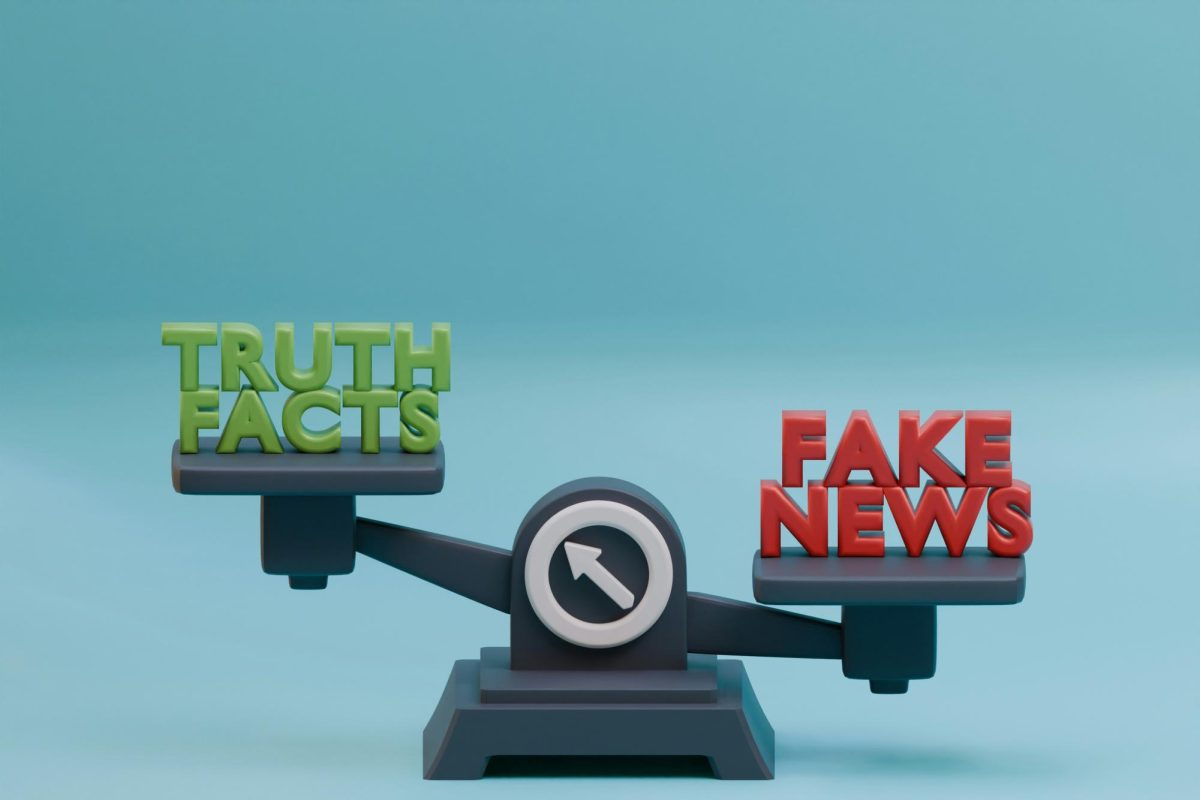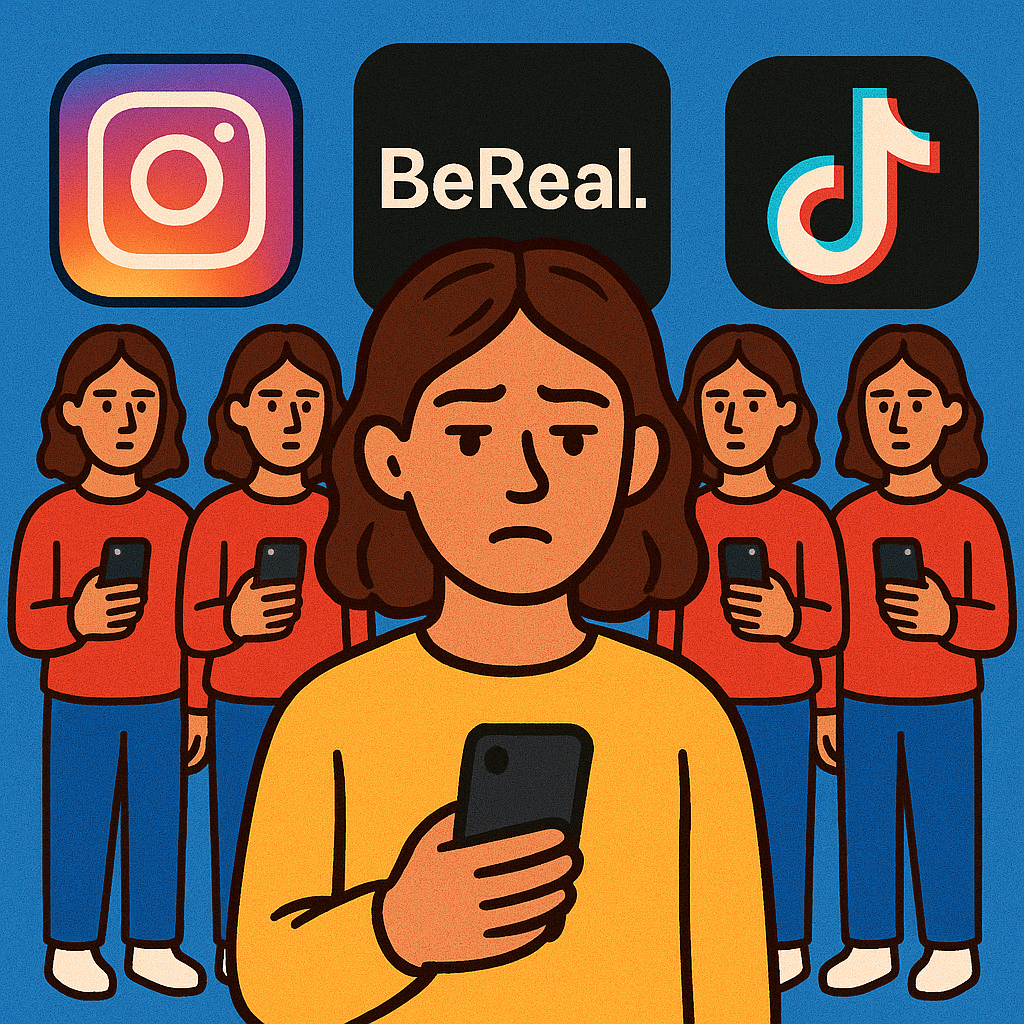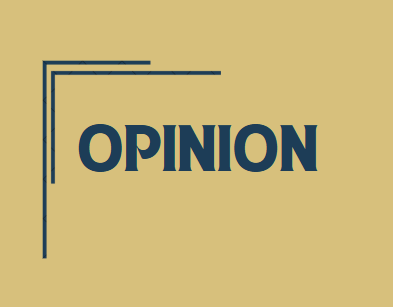Editor’s Note: The following article is an opinion piece that reflects the views of the author.
In today’s digital age, misinformation has become an ever-growing concern. With the explosion of social media platforms and the widespread accessibility of information, distinguishing truth from falsehood has never been more difficult. The consequences of misinformation, whether it’s impacting health decisions or shaping political views, are profound, yet many people continue to believe and spread misleading claims. Why is this happening, and what can be done about it?
Junior Reem A. noticed that misinformation has become especially dangerous with the rise of social media.
“People spread misinformation for their own benefit—often just to get views—without considering the consequences of their actions,” she said.
Social media platforms like TikTok and Instagram often allow false information to go viral in an instant, reaching millions before any fact-checking can be done. Reem also pointed out that people are more likely to believe information that confirms their preexisting beliefs, a phenomenon known as confirmation bias. A 2023 study in the Proceedings of the National Academy of Sciences notes that confirmation bias plays a major role in the acceptance and spread of misinformation by reinforcing personal beliefs while filtering out conflicting evidence.
Shivani P., another junior, agreed with Reem, emphasizing that misinformation in the health space is particularly harmful.
“I think it’s a serious problem because it spreads quickly and can affect real decisions, like people refusing vaccines during the pandemic,” she said.
The spread of false claims about vaccines, mental health, and miracle cures during the COVID-19 pandemic serves as a powerful reminder of how misinformation can have devastating real-world consequences. According to a 2022 WHO review, health misinformation online directly impacts public behavior, contributing to reduced vaccination rates and increased belief in ineffective treatments.
Senior Aimeé N. shared her perspective on how misinformation affects scientific understanding.
“There are plenty of people out there on the internet who don’t believe in evolution and do believe the Earth is flat, for example,” she said.
This type of misinformation can perpetuate ignorance, making it harder for people to accept well-established scientific facts. In fact, a 2019 study published in PLOS One found that 23% of Americans believed in at least one conspiracy theory, such as the flat Earth theory, indicating a significant gap in scientific literacy.
One common thread throughout these students’ views was the role of social media in spreading falsehoods. Social media is designed to prioritize content that generates engagement, and this often includes sensationalized or misleading information. The more dramatic or urgent a claim, the more likely it is to be shared, regardless of its truth. A 2021 study by MIT researchers showed that false information on Twitter spreads six times faster than true information, underlining the challenges of combating misinformation in a digital age.
However, the blame does not solely lie with social media. Many individuals are psychologically inclined to believe content that aligns with their desires, fears, or struggles—especially when facing health or financial hardships. This emotional vulnerability can make people more susceptible to accepting misleading claims, such as miracle cures or conspiracy theories, as truth. Misinformation often targets those in distress, offering false hope or simple answers to complex problems. The National Institute on Drug Abuse emphasizes that misinformation around opioid addiction and substance use can reinforce dangerous stereotypes and discourage people from seeking legitimate help.
To combat misinformation, it is essential to shift our focus toward education, critical thinking, and digital literacy. Research from the University of Bristol highlights that actively questioning sources and thinking critically are among the most effective ways individuals can protect themselves from being misled. Rather than accepting information at face value, individuals should be encouraged to verify facts through reputable sources and understand the mechanisms behind media manipulation.
Schools should implement robust media literacy programs that teach students how to critically evaluate online content, identify bias, and recognize misinformation. These programs empower students to analyze rather than passively consume content.
At the same time, social media platforms must be held accountable for their role in amplifying false information. Stronger regulations, clearer fact-checking labels, and improved algorithms can help slow the spread of harmful content before it reaches wide audiences. While no solution is perfect, these measures can work together to reduce the influence of misinformation and build a more informed public.
The consequences of misinformation are far-reaching, affecting everything from public health to societal cohesion. While social media is often seen as the culprit, the responsibility also lies with individuals to critically evaluate the information they consume. By promoting research, education, and responsible social media practices, we can begin to tackle the root of the problem and reduce the spread of false information.
As we continue to navigate the digital age, it’s essential that we become more discerning in our consumption of information. In a world where misinformation can easily spread faster than the truth, it’s up to each of us to be vigilant and informed.




